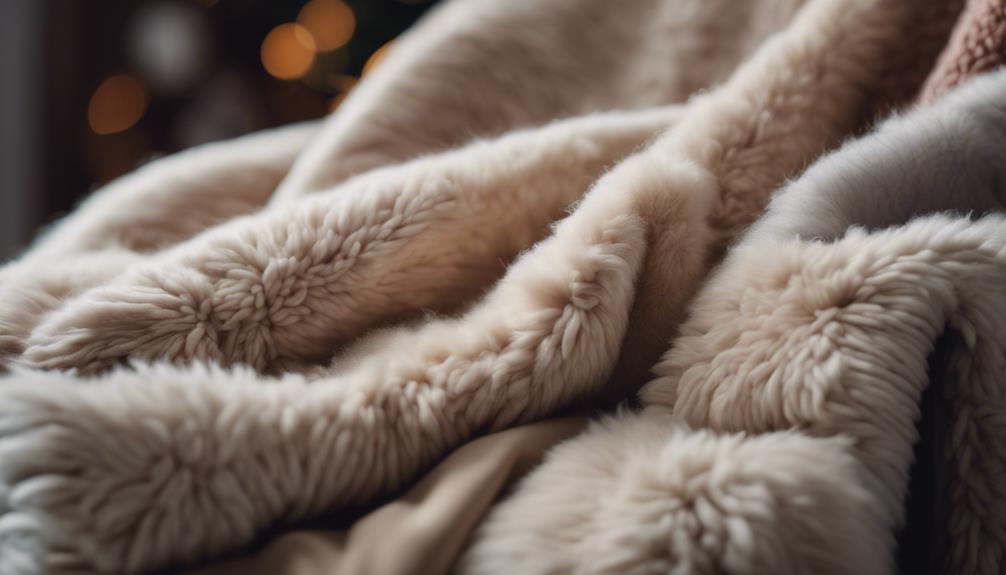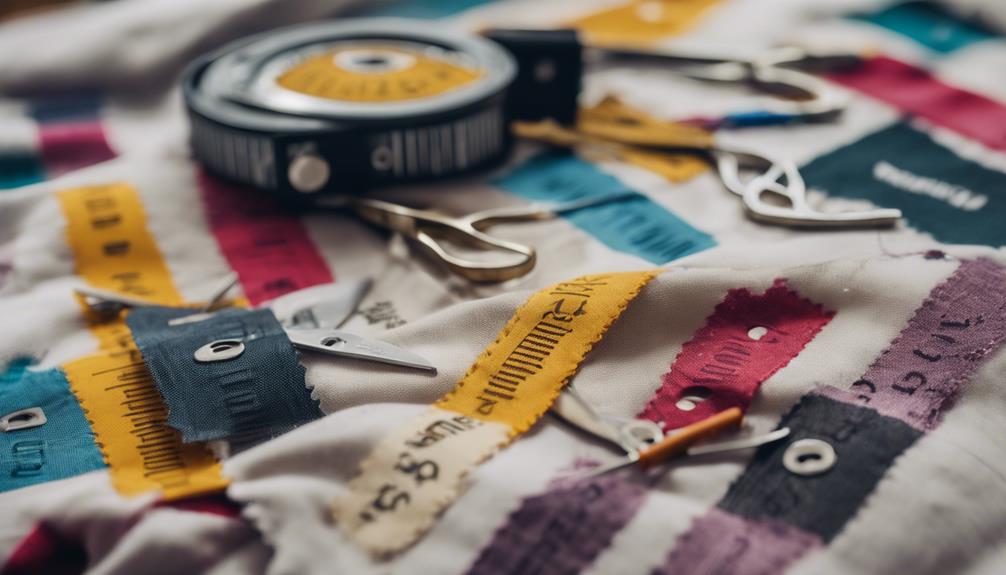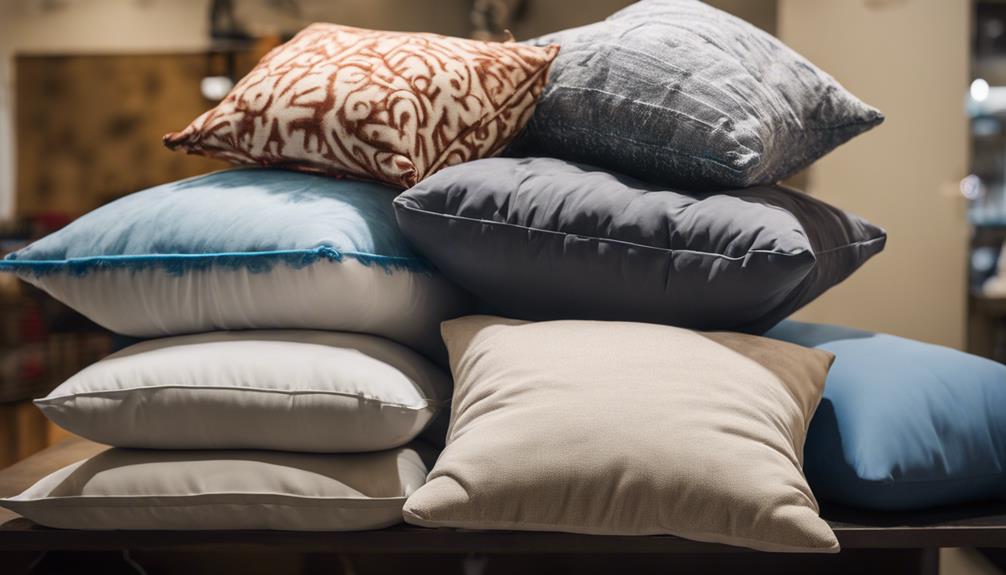Running an electric throw can cost as little as a dollar a day based on usage and efficiency. Electric throws typically use 60 to 200 watts per hour. Running a 100-watt throw for 8 hours at $0.12/kWh totals around $0.96 daily. Adjust heat settings lower for energy savings, use timers, and pair with a blanket. Be mindful of costs, adjust heating periods, and explore efficient heating options. Monitor patterns to manage consumption. Understanding wattage impacts costs and efficiency. Want to discover more ways to save on electric throw costs?
Key Takeaways
- Electric throws typically cost around $0.02 to run per hour.
- Adjusting heat settings can reduce running costs.
- Using a timer for automatic shut off saves energy.
- Pairing with a blanket can lower heating settings.
- Unplugging when not in use prevents standby power consumption.
Calculating Electric Throw Running Costs
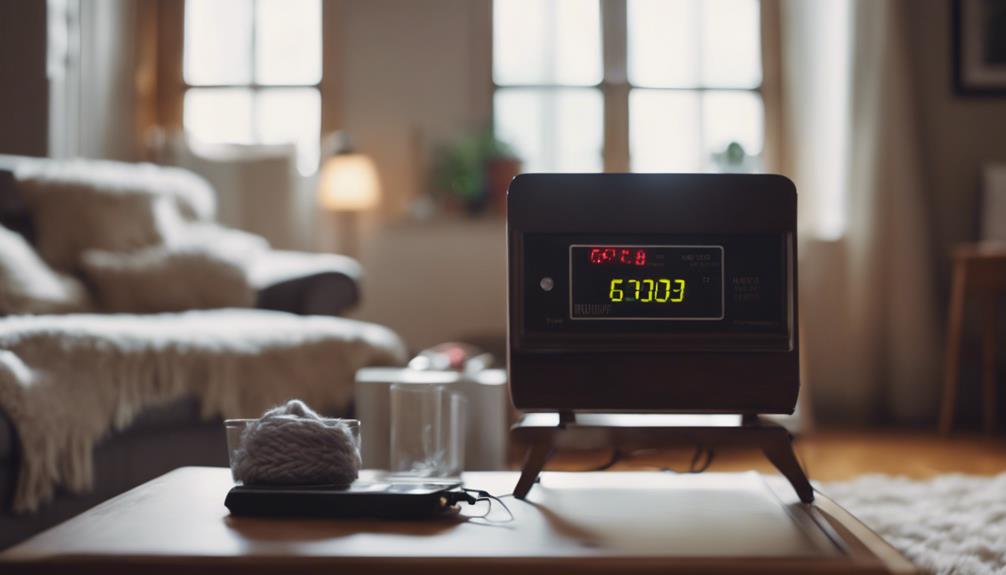
To accurately calculate the running costs of an electric throw, multiply its wattage by the number of hours it's used and the price per kilowatt-hour. By understanding the electricity costs involved, one can better manage the expenses related to heating.
Electric throws, consuming around 200 watts per hour, offer a cost-effective way to stay warm, typically costing only a few cents per hour to run.
When considering the cost of running an electric throw, it's important to factor in the wattage and the duration of usage. For instance, running a 200-watt electric throw for 6 hours at a rate of $0.10 per kilowatt-hour would amount to $1.20 for that day.
Wattage and Duration Calculation
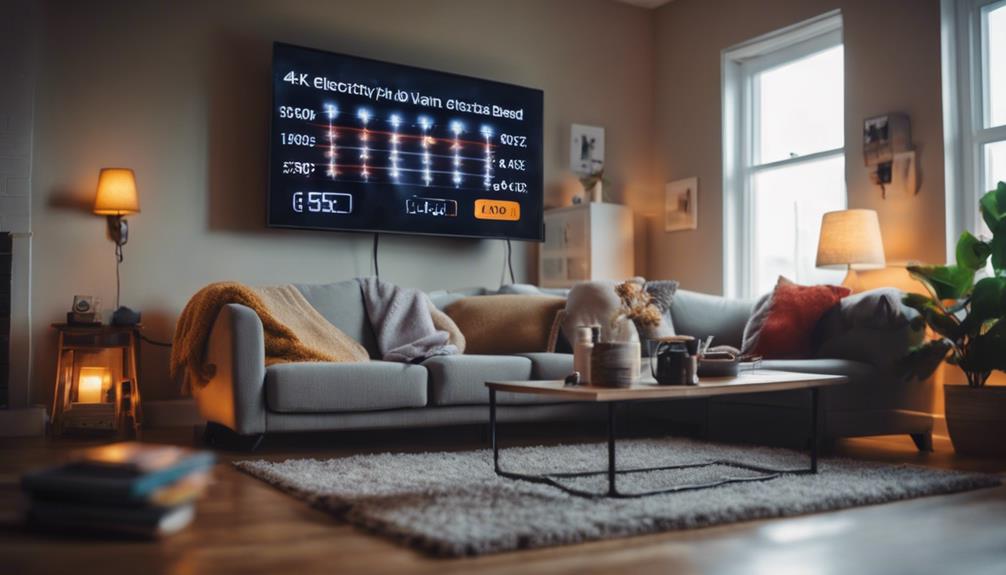
When contemplating the cost of running an electric throw, it's crucial to consider its wattage and how long it will be in use.
By estimating power consumption and calculating the running time accurately, one can determine the overall electricity costs.
Understanding these points will help users make informed decisions about how to efficiently use their electric throws.
Power Consumption Estimation
Estimating the cost of running an electric throw involves determining the wattage of the device and the duration of its operation. Electric throws typically consume around 100-150 watts per hour when in use, offering affordable heating options with minimal energy consumption.
To calculate electricity costs, multiply the wattage by the hours of use. For instance, a heated throw running at 150 watts for 6 hours would cost around 9 cents per day. Monitoring the wattage and usage time is essential for accurately estimating electricity expenses.
Understanding energy consumption patterns helps in making informed decisions about usage habits to optimize efficiency and cost-effectiveness. By being mindful of wattage and usage duration, one can better manage power consumption and expenses.
Running Time Calculation
Calculating the cost of running an electric throw requires multiplying its wattage by the daily hours of usage.
For instance, with a power rating of 50 watts and 4 hours of daily use, the calculation is 50 watts x 4 hours = 200 watt-hours.
To convert this to kilowatt-hours (kWh), divide by 1000 (200 watt-hours ÷ 1000 = 0.2 kWh).
By multiplying this result by the electricity rate per kWh, you can determine the cost of running the electric blanket for that specific duration.
Monitoring the wattage and duration of the electric throw is essential for estimating and managing energy consumption effectively, ensuring you stay within your desired budget for electricity usage.
Efficient Energy Consumption Tips
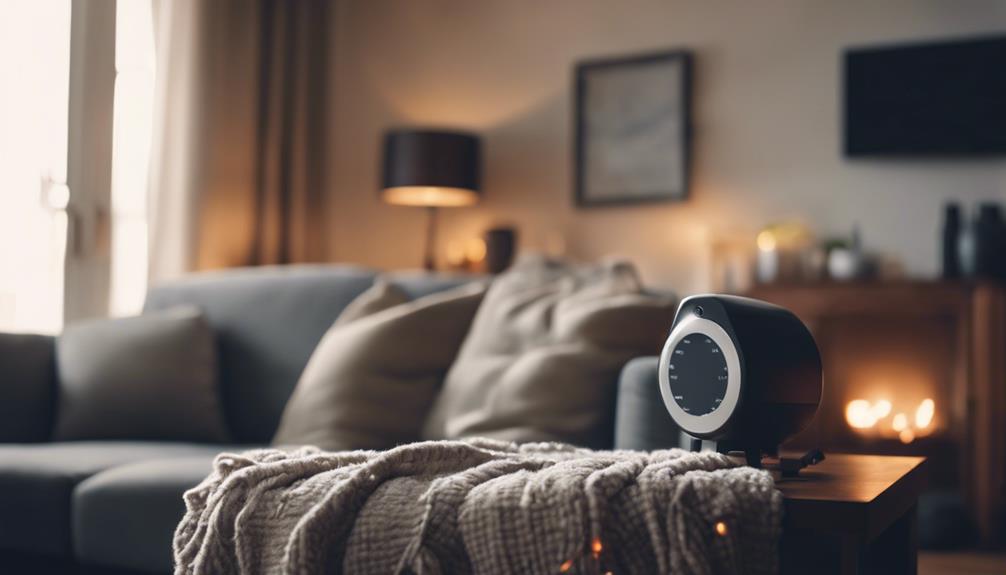
To maximize energy efficiency while using an electric throw, adjust the heat settings to a lower level and utilize a timer to automatically shut off the device after a set period. By setting the electric blanket to a lower temperature, you can enhance energy conservation without compromising on comfort.
Using a timer guarantees that the electric throw is only on when needed, saving energy when you might forget to turn it off manually. Keeping doors and windows closed while using the electric throw helps retain heat more efficiently, further reducing the need for high heat settings.
Additionally, pairing the electric throw with a warm blanket can help you stay cozy while decreasing the overall heating time. Remember to unplug the electric throw when not in use to prevent standby power consumption. These simple tips can make a significant difference in the cost to run your electric throw while keeping you warm and comfortable.
Managing Electric Throw Usage Costs
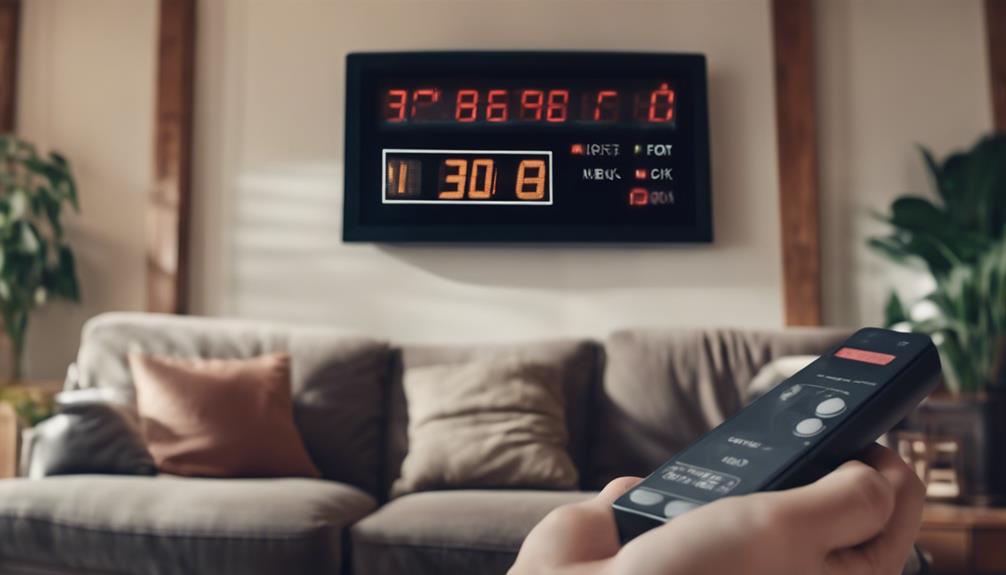
Let's talk about how to save on electric throw usage costs.
By implementing cost-saving tips, using the electric throw efficiently, and setting up timed heating schedules, we can effectively manage our electricity expenses.
These practices can help us stay warm while being mindful of our energy consumption and overall budget.
Cost-Saving Tips
Considering wattage and usage patterns helps us accurately estimate the running costs of an electric throw. Being mindful of electric blanket costs can lead to noticeable savings on our power bills.
Simple adjustments, like lowering the heating settings or using the throw for shorter periods, can effectively save energy and reduce overall expenses. For additional cost-saving measures, exploring alternative heating options such as hot water bottles can further minimize electricity usage.
Energy-Efficient Usage
Exploring ways to efficiently manage the usage of an electric throw can greatly impact the overall cost of running this cozy appliance. To enhance energy efficiency and reduce electricity costs, consider the following:
- Adjust Heat Settings: Lowering the heat setting on the electric throw can help save energy and reduce running costs without compromising comfort.
- Use Timers: Setting a timer to automatically turn off the electric throw after a certain period can prevent unnecessary usage and save on electricity costs.
- Practice Smart Usage: Being mindful of usage patterns, such as turning off the throw when not needed, can contribute to significant savings in the long run by minimizing unnecessary electricity consumption.
Timed Heating Schedules
To effectively manage the costs associated with running an electric throw, implementing timed heating schedules is a practical and efficient strategy. By setting a timed heating schedule for your electric throw, you can effectively manage usage costs.
For example, consider programming the throw to turn on before bedtime and automatically shut off during the night to optimize energy consumption. Utilize the timer features on the electric throw to limit usage to specific time periods, reducing overall electricity costs.
It's also beneficial to adjust the heating duration based on personal comfort needs, finding a balance between warmth and cost-effectiveness. Monitoring and adjusting the timed heating schedule regularly can contribute significantly to optimizing energy usage and effectively reducing running costs.
Understanding Electric Throw Wattage
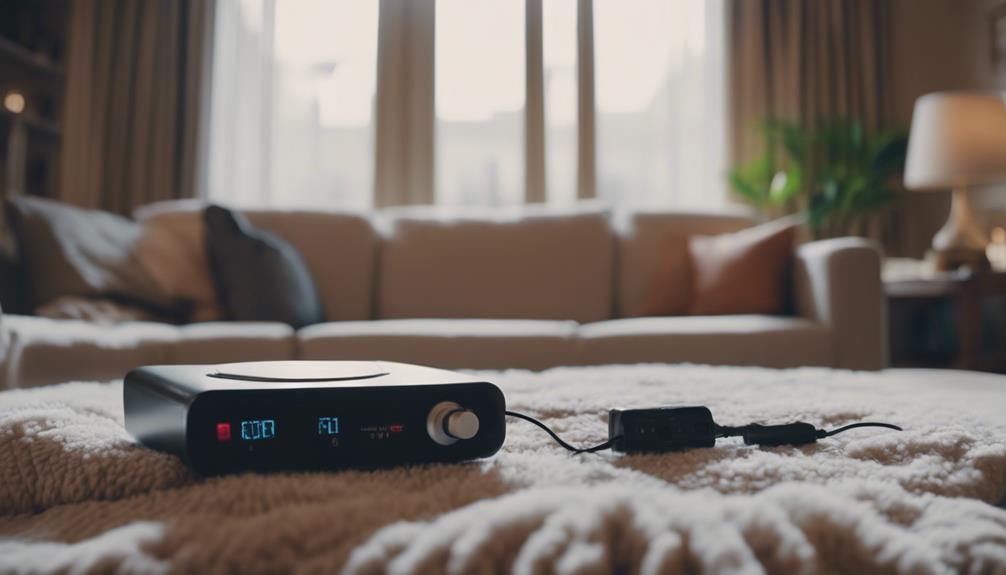
Understanding electric throw wattage is vital for determining the heating capacity and energy consumption of the device. Here are three key points to keep in mind when looking at the wattage of an electric throw:
- Range of Wattage: Electric throw wattage typically falls between 50 to 200 watts, with variations based on the size and heating capabilities of the throw. Higher wattage throws generally offer more warmth but might consume more electricity.
- Heating Capacity: The wattage of an electric throw directly impacts its heating capacity. A higher wattage throw can generate more heat, ideal for colder environments or individuals seeking extra warmth.
- Energy Consumption: Monitoring the wattage of your electric throw is essential for understanding energy consumption. By knowing the wattage and runtime, you can accurately calculate the running costs and make informed decisions to optimize energy usage.
Cost-Effective Electric Throw Usage
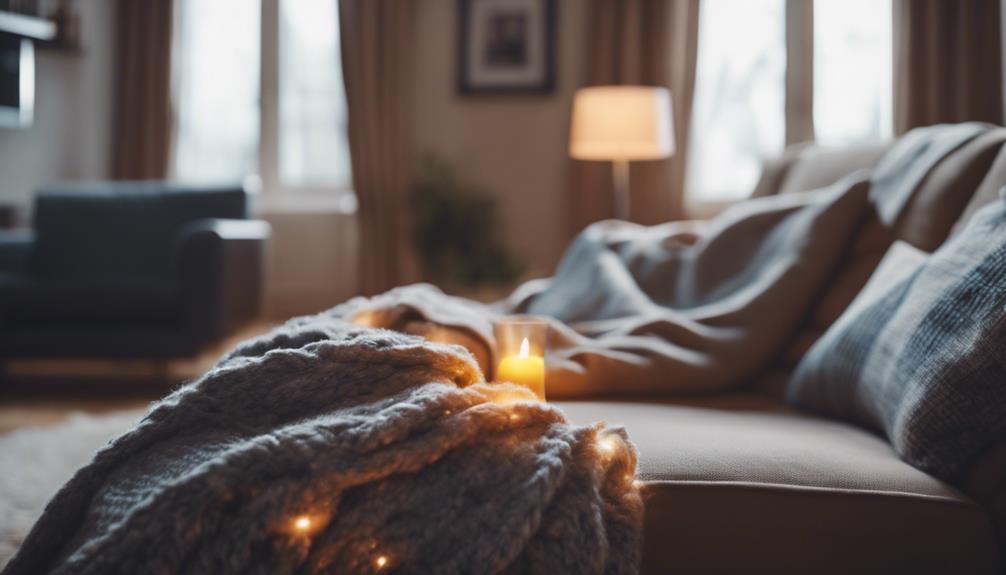
Optimizing our electric throw usage can lead to significant cost savings in our energy consumption. Understanding the running costs of an electric throw is essential for managing energy consumption efficiently. Running an electric throw typically costs around 2.2p per hour, which is comparable to the energy usage of a fridge-freezer and another appliance combined. Factors such as wattage and duration of usage play a vital role in estimating running costs accurately. Variations in heating settings and changes in usage patterns, like during illness, can impact overall energy consumption. By monitoring our electric throw usage patterns, we can identify opportunities to optimize energy efficiency and reduce running costs effectively.
| Aspect | Description |
|---|---|
| Running Costs | Around 2.2p per hour, similar to a fridge-freezer and another appliance. |
| Wattage | Understanding wattage is essential for estimating accurate running costs. |
| Usage Patterns | Changes in settings and usage patterns can affect overall energy consumption. |
Maximizing Energy Efficiency
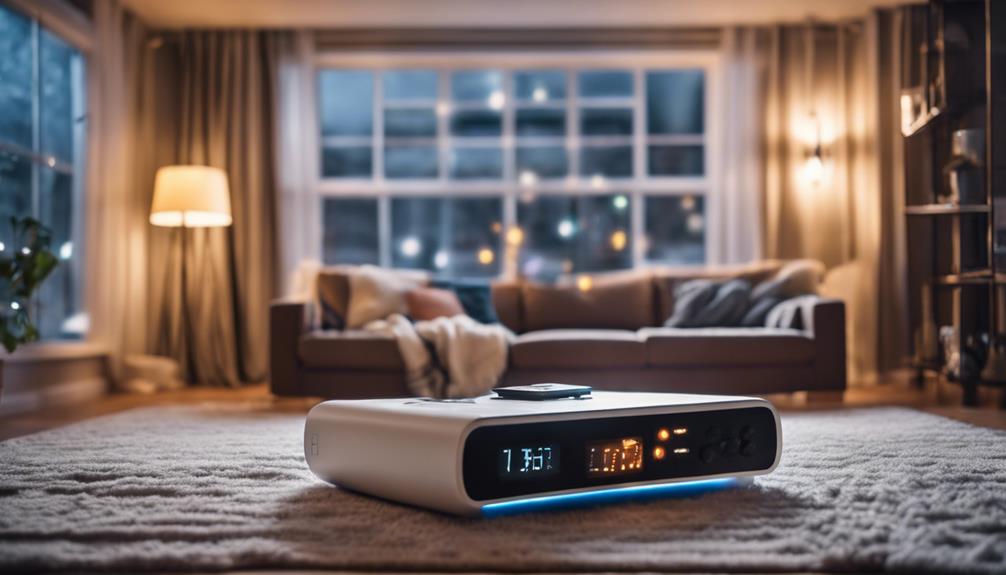
Our focus now shifts to maximizing energy efficiency when using an electric throw. To guarantee peak energy efficiency and minimize electricity consumption, consider the following recommendations:
- Adjust Heating Settings: Lowering the heating settings on your electric throw can greatly reduce electricity consumption without compromising comfort. Experiment with different settings to find the right balance between warmth and energy efficiency.
- Use a Timer: Utilize a timer function if available on your electric throw to automatically turn it off after a set period. This feature can help save energy by making sure the throw isn't running unnecessarily when not in use.
- Insulate and Cover: Placing a blanket over the electric throw when in use can help retain heat, allowing you to lower the heating settings while still staying cozy. Additionally, positioning the throw in a well-insulated area can maximize its energy-saving capabilities by preventing heat loss. Regularly cleaning the electric throw is also essential to maintain peak performance and energy efficiency.
Estimating Electric Throw Running Costs
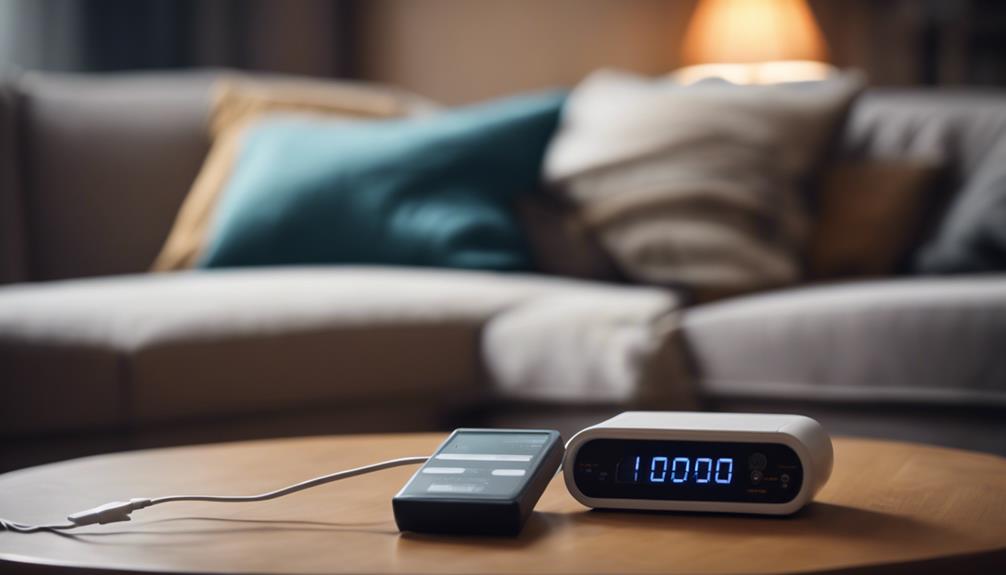
How much does it cost to run an electric throw per hour based on its wattage and the price per kilowatt-hour? Electric throws typically consume around 60 to 100 watts per hour, resulting in running costs of about 1 to 2 cents per hour. To estimate the running costs more accurately, knowing the wattage of the electric throw and the price per kilowatt-hour is essential. For instance, running a 100-watt electric throw for 8 hours at a rate of $0.12 per kilowatt-hour would cost around $0.96 per day.
| Electric Throw Wattage | Running Cost per Hour |
|---|---|
| 60 watts | $0.72 |
| 80 watts | $0.96 |
| 100 watts | $1.20 |
| 120 watts | $1.44 |
| 140 watts | $1.68 |
Monitoring your usage patterns and adjusting the heating settings can be beneficial in managing and reducing the running costs associated with using an electric throw. Electric throws offer a cost-effective solution for targeted heating needs when compared to traditional heating methods.
Frequently Asked Questions
How Much Electricity Does an Electric Throw Use?
When operating an electric throw, it typically uses 100 to 150 watts per hour. This translates to a cost of around 2.2 to 3.3 cents for one hour of use.
The total electricity consumption of the electric throw depends on how long it runs each day. Understanding the wattage of the device is crucial for accurately estimating its running expenses.
Compared to traditional heating methods, electric throws are generally considered energy-efficient options.
Do Electric Blankets Increase the Electric Bill?
Electric blankets do increase the electric bill, but their impact is relatively low. They cost around 2-4 cents per hour to run, adding about 16-32 cents to your daily electricity bill if used for 8 hours.
Compared to room heaters, electric blankets are more cost-effective and energy-efficient. Understanding the wattage and usage patterns of your electric blanket can help manage its impact on your bill.
Is It Cheaper to Use an Electric Blanket or Turn up the Heat?
Using an electric blanket can save money compared to cranking up the heat. Electric blankets cost around 2-4p per hour, while central heating can hit 61p per hour.
They're more energy-efficient, targeting warmth directly at you without heating up an entire room. It's a no-brainer for cutting costs while staying cozy.
Is a Heated Throw Worth It?
Using a heated throw can be worth it due to its affordability and energy efficiency. Compared to room heaters, which can be more costly to run, a heated throw offers targeted warmth and comfort at a lower expense.
It can help reduce overall energy consumption while providing sufficient heat. Investing in a heated throw can lead to energy savings and create a cozy environment, making it a practical choice during colder months.
Is the Cost of Running an Electric Throw Worth the Investment?
When considering purchasing an electric throw, it’s important to factor in the running cost of the electric throw. While the initial investment may seem high, the lower running cost of an electric throw compared to traditional heating methods can make it a worthwhile investment in the long run for keeping warm.
Conclusion
To sum up, running an electric throw can vary in cost depending on factors like wattage and duration of use. By being mindful of energy consumption and utilizing cost-effective practices, you can minimize your electricity expenses.
Remember, every watt saved is a penny earned. So, make sure to maximize energy efficiency and manage your electric throw usage wisely to keep your pocketbook happy and your home cozy.

